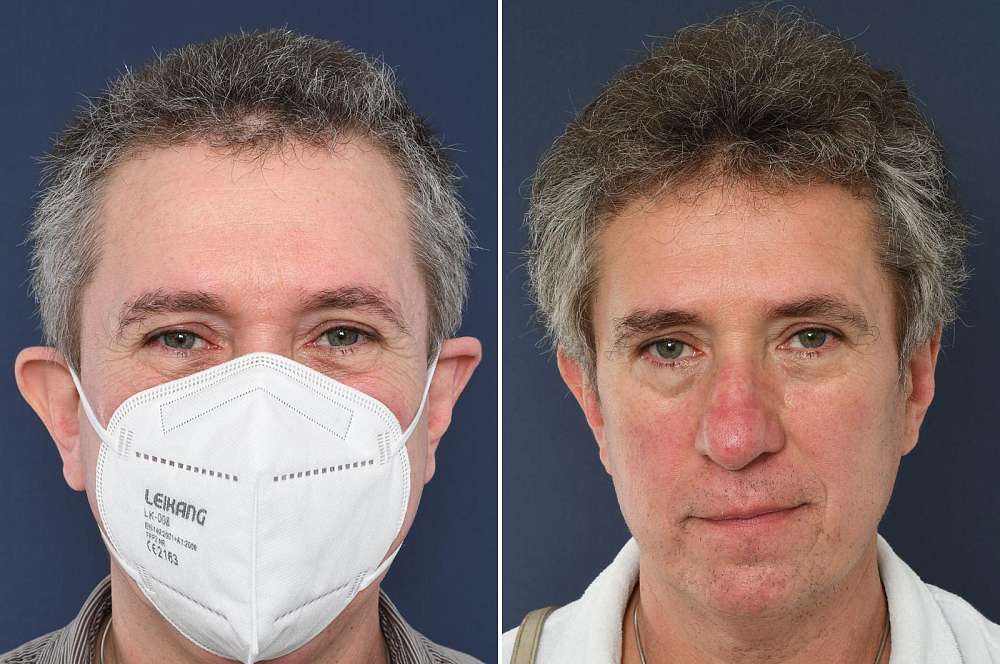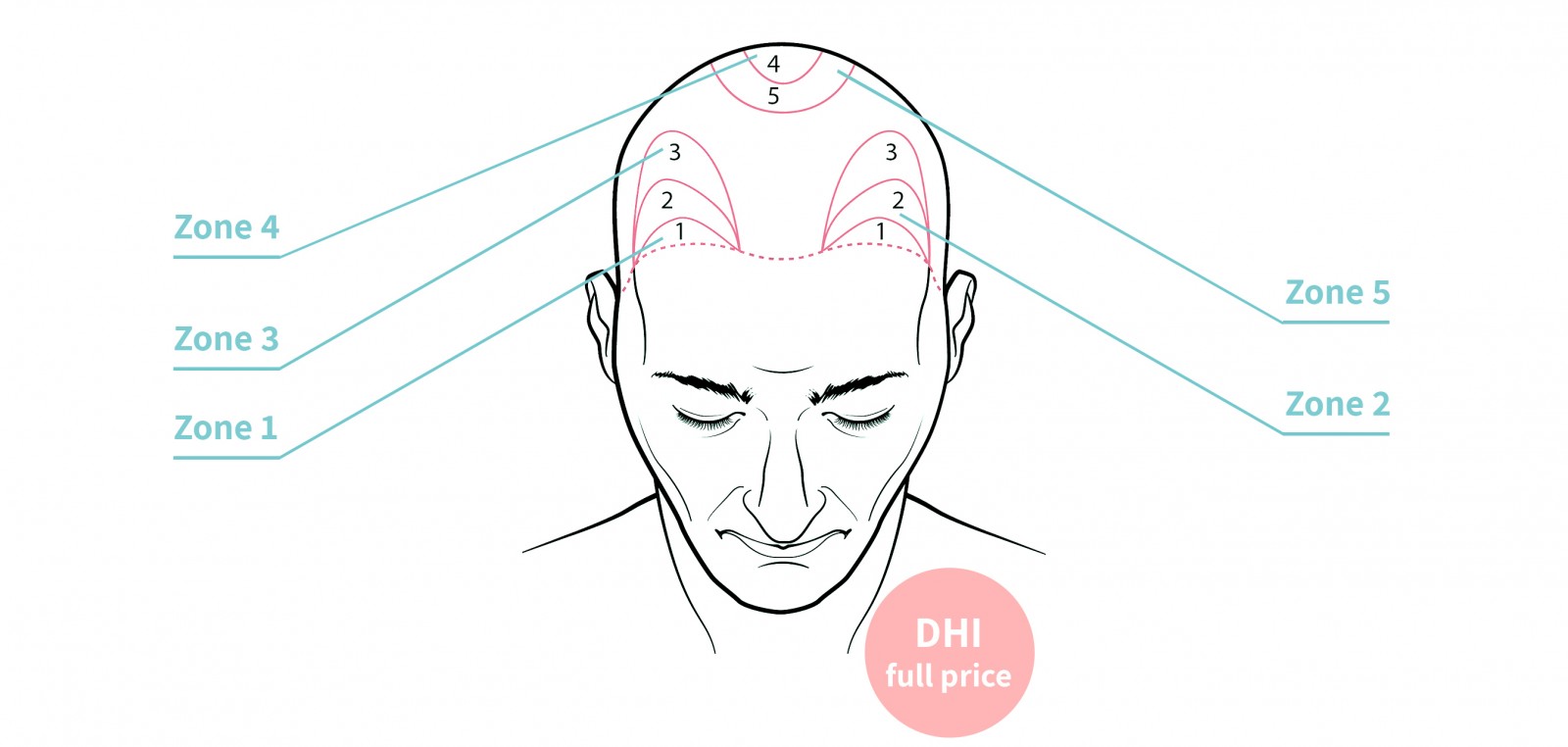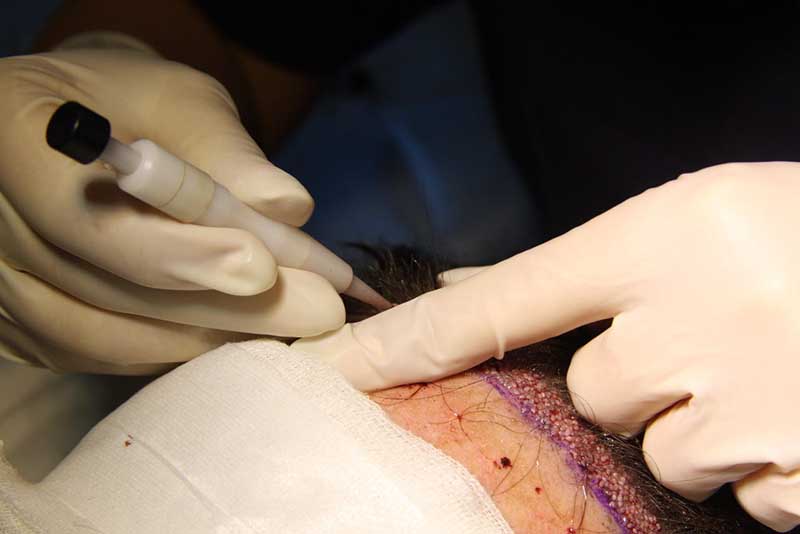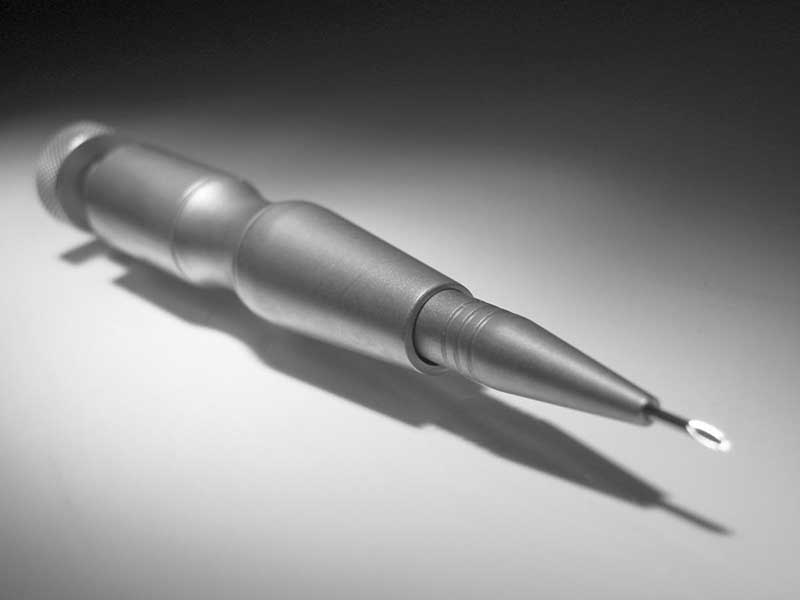Hair transplant - DHI
Table of contents:
What does DHI mean?
DHI in English stands for Direct Hair Implantation. Direct hair implantation is the latest hair transplantation technique where it is no longer necessary to make channels or incisions in the recipient area. Using a special implantation device, the DHI Implanter, hair follicles are directly implanted.




















Usually, this method is used in the following cases:
- When you do not mind having the zones shaved. It works easier and more efficient.
- When you want a dense head of hair.
- When you want minimal bleeding during the implantation process.
 Possible treatment areas
Possible treatment areas
How does a hair transplant using the DHI method work?
Before your treatment begins, your head will be prepared and anaesthetised.
Step 1: Removing the grafts
- After prepping the scalp, the "harvesting" can begin. Using a DHI Implanter or Choi Pen, the hair follicles or grafts are removed from the donor area.
 A choi pen of DHI Implanter is used to harvest and implants grafts.
A choi pen of DHI Implanter is used to harvest and implants grafts.
Step 2: Implanting the grafts
- With the DHI Implanter or Choi pen, the graft is immediately "punctured" in the skin without first opening the channels or incision areas in the recipient area.
- Thanks to this method, there is almost no bleeding during the implantation process.
 A close-up of a choi pen or DHI Implanter.
A close-up of a choi pen or DHI Implanter.
Advantages of a DHI hair transplant
- The quality of the hair follicles remains optimal during the process
- Lasting result
- No visible scars
- The donor area remains unchanged
- Very natural result
- Minimum sensitivity during and after the procedure
- Maximum grafts can be removed
- Less visible wounds
- Better healing process
- Creating more density thanks to the DHI Implanter or Choi pen
- It is not necessary to shave the hair completely, only the donor area
Possible side effects and disadvantages
- Your scalp may feel sensitive and be slightly swollen after the treatment.
- In very rare cases, infection may occur. Therefore, as a precautionary measure, we give antibiotics before and after the treatment.
- In rare cases, shock loss may occur, resulting in temporary hair loss. This is because the scalp has been under stress during the treatment.
- Since the DHI Implanter can only be used once, the material cost of this procedure is more expensive.
- This method is slightly more time-consuming.
Who is not a suitable candidate for a hair transplant with the DHI method?
The DHI method is less suitable for people with very curly, thin or frizzy hair. This type of fragile hair is easily damaged in the process and has more difficulty fitting into the DHI Implanter.
People dealing with the following things are not suitable candidates for a hair transplant with the DHI method:
- Low blood pressure
- Cardiac arrhythmia
- Blood thinners
- Diabetes
We are doing our very best to keep this information up-to-date. In case you see anything that no longer seems accurate, or in case you have a question, please fill out the form below.
